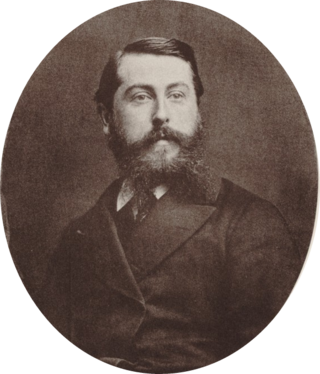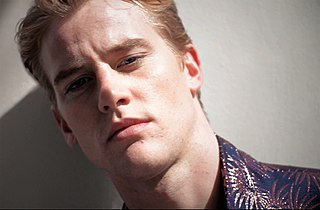
Clément Philibert Léo Delibes was a French Romantic composer, best known for his ballets and operas. His works include the ballets Coppélia (1870) and Sylvia (1876) and the opera Lakmé (1883), which includes the well-known "Flower Duet".

Coppélia is a comic ballet from 1870 originally choreographed by Arthur Saint-Léon to the music of Léo Delibes, with libretto by Charles-Louis-Étienne Nuitter. Nuitter's libretto and mise-en-scène was based upon E. T. A. Hoffmann's short story Der Sandmann. In Greek, κοπέλα means young woman. Coppélia premiered on 25 May 1870 at the Théâtre Impérial de l'Opéra, with the 16-year-old Giuseppina Bozzacchi in the principal role of Swanhilda and ballerina Eugénie Fiocre playing the part of Frantz en travesti. The costumes were designed by Paul Lormier and Alfred Albert, the scenery by Charles-Antoine Cambon, and Édouard Desplechin and Jean-Baptiste Lavastre.

Sylvia, originally Sylvia, ou La nymphe de Diane, is a full-length classical ballet in two or three acts, first choreographed by Louis Mérante to music by Léo Delibes.

La source is a ballet in three acts/four scenes with a score composed by Léo Delibes and Ludwig Minkus which was premiered in Paris in 1866 with choreography by Arthur Saint-Léon. In 1878 in Vienna it was called Naïla, die Quellenfee.

Violette Verdy was a French ballerina, choreographer, teacher, and writer who worked as a dance company director with the Paris Opera Ballet in France and the Boston Ballet in the United States. From 1958 to 1977 she was a principal dancer with the New York City Ballet where she performed in the world premieres of several works created specifically for her by choreographers George Balanchine and Jerome Robbins. She was Distinguished Professor of Music (Ballet) at the Jacobs School of Music, Indiana University, in Bloomington, and the recipient of two medals from the French government.

This version of the Cinderella ballet, using Sergei Prokofiev's Cinderella music and re-choreographed by Frederick Ashton, is a comic ballet.
Megan Fairchild is an American ballet dancer. She is currently a principal dancer with the New York City Ballet.
Le Baiser de la fée is a neoclassical ballet in one act and four scenes composed by Igor Stravinsky in 1928 and revised in 1950 for George Balanchine and the New York City Ballet. Based on Hans Christian Andersen's short story Isjomfruen, the work is an homage to Pyotr Ilyich Tchaikovsky, for the 35th anniversary of the composer's death. Stravinsky elaborated several melodies from early piano pieces and songs by Tchaikovsky in his score. A commission by Ida Rubinstein from 1927, the ballet was choreographed by Bronislava Nijinska and premiered in Paris on 27 November 1928.

Misa Kuranaga is a Japanese ballerina. She is a principal dancer at the San Francisco Ballet. She was formerly a dancer at Boston Ballet, and was the first Asian person to be promoted to principal dancer there.

The myth of Diana and Actaeon can be found in Ovid's Metamorphoses. The tale recounts the fate of a young hunter named Actaeon, who was a grandson of Cadmus, and his encounter with chaste Artemis, known to the Romans as Diana, goddess of the hunt. The latter is nude and enjoying a bath in a spring with help from her escort of nymphs when the mortal man unwittingly stumbles upon the scene. The nymphs scream in surprise and attempt to cover Diana, who, in a fit of embarrassed fury, splashes water upon Actaeon. He is transformed into a deer with a dappled hide and long antlers, robbed of his ability to speak, and thereafter promptly flees in fear. It is not long, however, before his own hounds track him down and kill him, failing to recognize their master.

Nicholas Magallanes was a Mexican-born American principal dancer and charter member of the New York City Ballet. Along with Francisco Moncion, Maria Tallchief, and Tanaquil Le Clercq, Magallanes was among the core group of dancers with which George Balanchine and Lincoln Kirstein formed Ballet Society, the immediate predecessor of the New York City Ballet.

Tchaikovsky Pas de Deux is a ballet choreographed by George Balanchine to a composition by Pyotr Ilyich Tchaikovsky originally intended for act 3 of Swan Lake. With costumes by Barbara Karinska and lighting by Jack Owen Brown, it was first presented by New York City Ballet at the City Center of Music and Drama, New York, on 29 March 1960. Robert Irving conducted the New York City Ballet Orchestra. The dancers were Violette Verdy and Conrad Ludlow.
The Suzanne Farrell Ballet is a ballet company housed at the Kennedy Center, Washington, D.C., and founded in 2000 by Suzanne Farrell, one of George Balanchine's most celebrated ballerinas, and a former New York City Ballet principal dancer. Until 2017, the Suzanne Farrell Ballet was a full-fledged company produced by the Kennedy Center and had performed there since 1999 in addition to presenting extensive national and international tours. In September 2016, the Center announced that the company would be disbanding at the end of 2017, citing "possibilities of new expansion" and indicating that Farrell would likely return to "full-time teaching."
Dance Preludes was a ballet made by Miriam Mahdaviani of New York City Ballet to Witold Lutosławski's 1955 music as a pièce d'occasion for the Dancers' Emergency Fund Benefit on 24 February 1991 at the New York State Theater, Lincoln Center. The program also included George Balanchine's Serenade, the pas de deux from his Theme and Variations, Robert La Fosse's Gretry Pas de Deux, Sean Lavery's Romeo and Juliet, Alexandre Proia's Salome Dances for Peace, and ended with Balanchine's Stars and Stripes.
Carla Körbes is a Brazilian ballet dancer who performed as a principal dancer with the Pacific Northwest Ballet, then became the associate artistic director of L.A Dance Project. She is now an associate professor at Indiana University Jacobs School of Music's ballet faculty.
Ballo della Regina is a ballet choreographed by George Balanchine. Set to the ballet divertissement from Giuseppe Verdi's opera Don Carlos, the Balanchine ballet is plotless but alludes to the grotto setting of the divertissement. The ballet is danced by a lead couple and an all-female ensemble, with choreography that showcases the speed and precision of the lead ballerina. Ballo della Regina was made for the New York City Ballet, and premiered on January 12, 1978, at the New York State Theater, with Merrill Ashley and Robert Weiss in the two lead roles.

André Prokovsky was a Franco-Russian ballet dancer, choreographer, and company director. Admired as a bravura performer and an innovative choreographer, he had a varied career that was broadly international in scope.

Thiago Soares is a Brazilian ballet dancer and choreographer. He is a former principal dancer with The Royal Ballet in London, and guest principal in other theatres around the world.

Chase Finlay is a former ballet dancer and former principal dancer with the New York City Ballet who has also danced with the Mariinsky Theatre in Russia.












